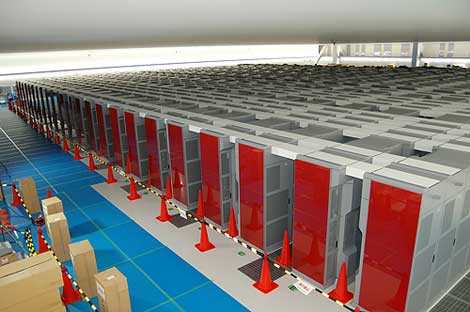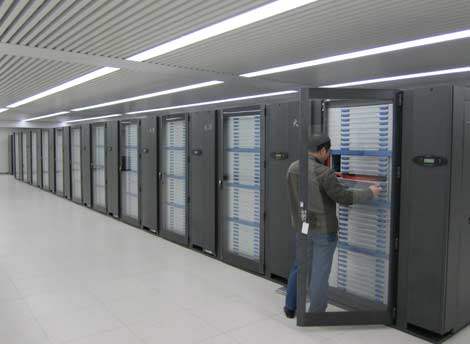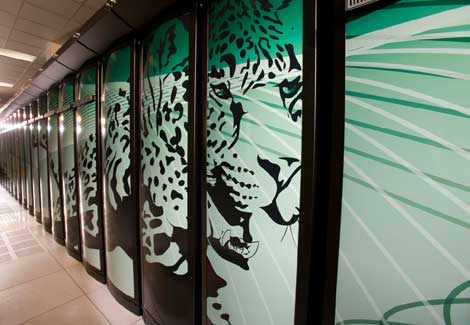
Like this story? Get the latest data center news by e-mail or RSS, or follow us on Twitter or Facebook.
The twice-a-year list of the Top 500 supercomputers documents the most powerful systems on the planet. Many of these supercomputers are striking not just for their processing power, but for their design and appearance as well. Here's a look at the top finishers in the latest Top 500 list, which was released Monday, June 20, 2011 at the ISC 11 conference in Germany.
K SUPERCOMPUTER, RIKEN Advanced Institute for Computational Science (AICS), Japan

The “K” supercomputer, a joint project by Fujitsu and the RIKEN center, has overtaken China’s Tianhe-1A system to gain the top spot on the updated list. The K computer system, currently in the configuration stage, features 68,544 Sparc 64 CPUs, each with eight cores, for a total of 548,352 cores—almost twice as many as any other system in the TOP500. The K Computer is also more powerful than the next five systems on the list combined. The system is deployed across 672 computer racks and has a power consumption of 9.89 megawatts. The K Computer’s name draws upon the Japanese word "Kei" for 10^16 (ten quadrillions), representing the system's performance goal of 10 petaflops.
TIANHE-1A, National Supercomputing Center, Tianjin, China

The Tianhe-1A, the most powerful supercomputer in the world as of November 2010.
The Chinese Tianhe-1A system at the National Supercomputer Center in Tianjin slipped back into second in the latest survey, achieving a performance level of 2.6 petaflop/s (quadrillions of calculations per second). Tianhe-1A is one of the 19 systems in the Top 500 that use NVIDIA GPUs (graphics processing units) to accelerate computation, up from 17 in the November survey.
JAGUAR, Oak Ridge National Laboratory

Jaguar was the top performer in the June 2010 survey, but fell back to second in November 2010 and now slips to third overall with a 1.75 petaflop performance speed running the Linpack benchmark. Jaguar is a Cray XT5 system located at the Department of Energy’s Oak Ridge Leadership Computing Facility in Tennessee. While Jaguar fell a few flops short this year, it retains a leadership position in supercomputing style with its striking Jaguar motif.
NEBULAE, China

Nebulae, which is located at the National Supercomputing Centre in Shenzhen, China, achieved 1.271 PFlop/s to rank fourth overall, down one position from the November survey. Nebulae was built from a Dawning TC3600 Blade system with Intel X5650 processors and NVIDIA Tesla C2050 GPU.
TSUBAME 2.0, GSIC Center, Tokyo Institute of Technology

The Tsubame supercomputer at the Tokyo Institute of Technology
Like the top-ranked Tianhe system, Tsubame 2.0 is a successor system that builds upon the design of a previously-ranked system. Tsubame 2.0 was developed by the Tokyo Institute of Technology in collaboration with NEC and HP, and is powered by more than 1,400 nodes using both HP Proliant servers and NVIDIA Tesla GPUs. It is Japan's highest-ranked supercomputer. Plans are being developed for Tsubame 3.0.
